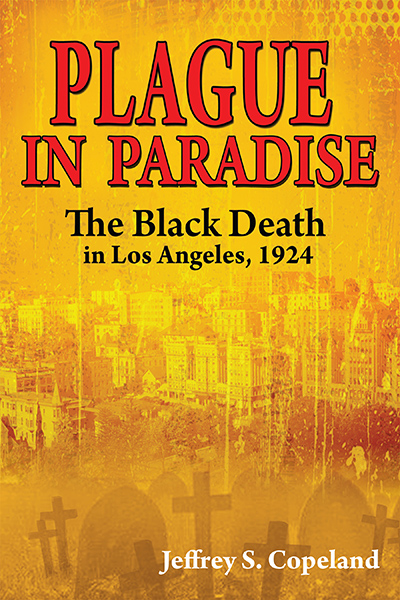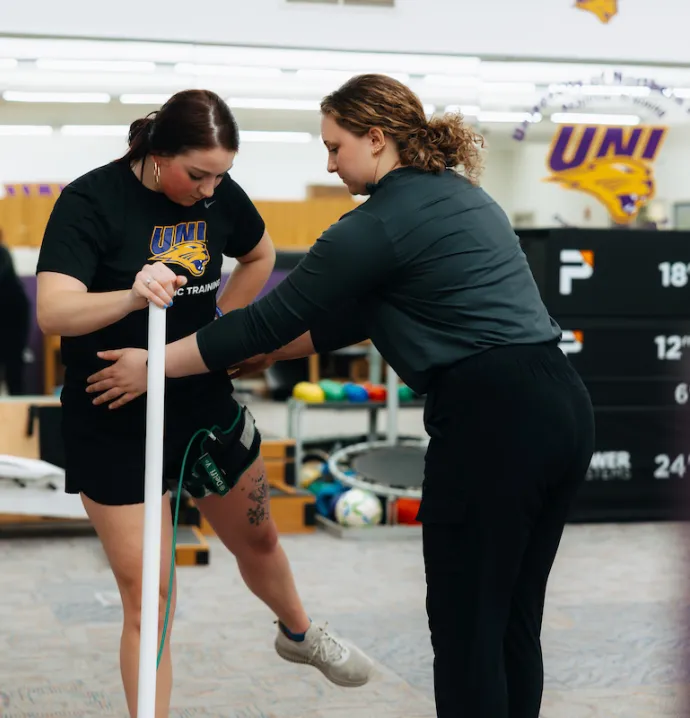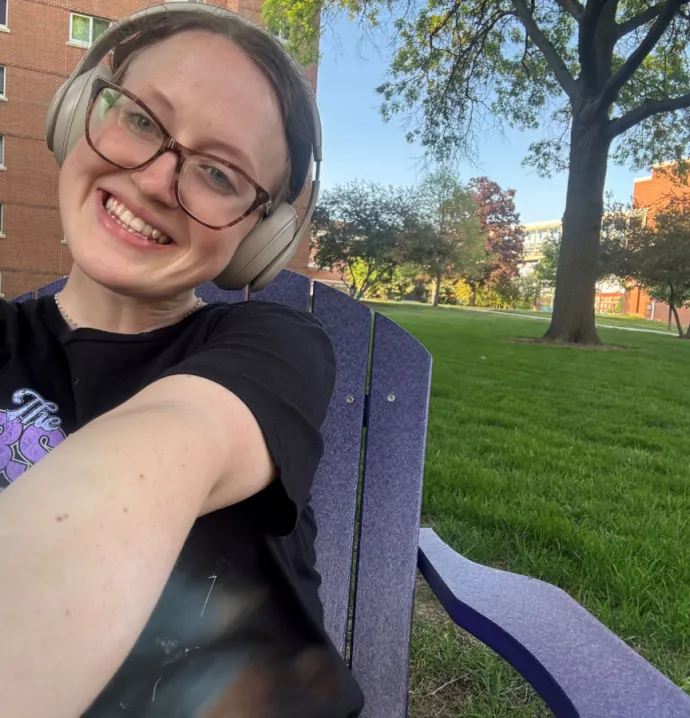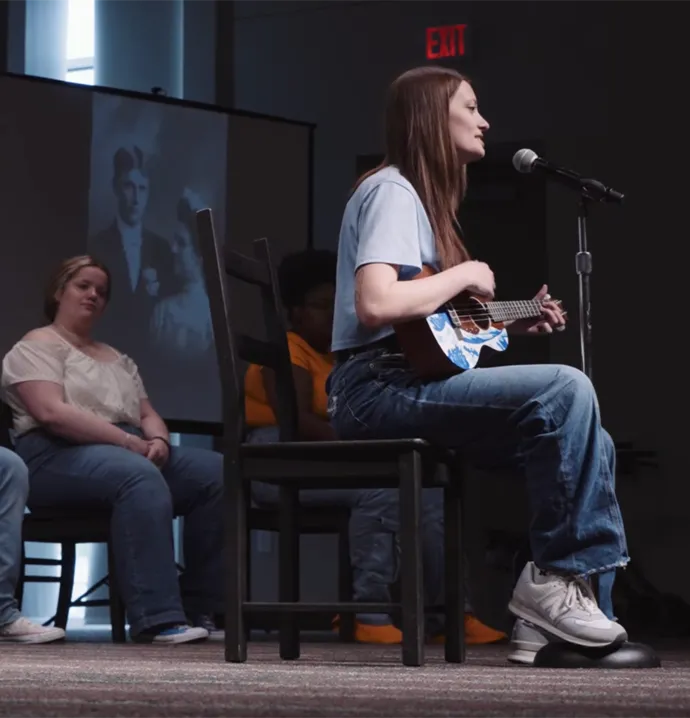5 questions with Jeffrey Copeland
5 questions with Jeffrey Copeland
A deadly outbreak without a cure. Local governments urging residents to stay inside and avoid other people. Medical professionals on the frontlines trying to halt the rapid spread of an infectious disease.
It’s not COVID-19, but the 1924 outbreak of the Black Plague in Los Angeles.
The parallels between the two events are stunning. But, when University of Northern Iowa professor of languages and literature Jeffrey Copeland published his literary nonfiction book about the Los Angeles outbreak, “Plague in Paradise,” in 2018, he had no idea the global outbreak of COVID-19 would bring such startling similarities.
“When things started happening, I got this cold chill up my back, because what is happening now is exactly what happened in 1924,” Copeland said. Some things were different - LA officials kept the spread contained but also burnt down much of the working-class neighborhood where it originated.
As the coronavirus shakes the foundations of modern life and the global economy, Copeland talked about his work and the lessons we could all learn from the 1924 Black Plague outbreak in Los Angeles.
Can you provide a brief synopsis of your book and why you wrote it?
I decided to write this book because I write what is called literary nonfiction, which are true stories but I put them in the voices of the characters. I like to do the research of why something happened and write the story as if it’s happening (now). I've written over 35 books and I'm always looking for good stories. I found this one day while sitting in an airport reading a magazine and it referenced the black plague outbreak in Los Angeles and I thought “why haven’t I heard of this before?” I did a little research into it and found there’s an incredible story here that had never been told before.
The book is about the outbreak of the Black Plague in LA in 1924 at a time when LA was touting itself as the “Paradise of the West.” They had a brand new port of East Los Angeles, which made them the largest port on the western seaboard. Industry was booming, and they had a burgeoning film industry. They were encouraging people to come to California for a new life. The chamber of commerce spent over a million dollars sending out publicity all over the nation urging people to move out there. All of sudden the plague shows up and the last thing they wanted in LA was to be known as “Plague City.” That’s one of the reasons why we didn’t hear a lot about this in history. They tried to hide what happened so people wouldn’t get the impression of LA as the unhealthy city.
How did the Black Plague start in Los Angeles in 1924, and how long did it take medical officials to determine they had a serious problem brewing?
It started when a cargo ship came from China and docked at the brand new port and a crate was taken off the ship into one of the communities in LA. Inside that crate were rats that had fleas on them and the fleas were the carriers of the Black Plague. One family, the Lujan family, became infected. A doctor came into the community and misdiagnosed it as pneumonia. As people in the family got sicker, another doctor went out and looked them over and remembered the symptoms of the Black Plague. And he knew what it was immediately. The other doctors didn’t believe him. The Spanish flu had taken place just over 5 years before, which killed between 30 and 100 million worldwide. And they thought this was another outbreak of the Spanish flu. It wasn't until they had doctors from San Francisco who had experience dealing with a plague arrived to determine they had a problem here.
What measures did the city officials take to control the spread of the disease, and who were the heroes who helped get this outbreak under control?
Once they found out it was the Black Plague, they knew the plague had killed over half the population of Europe during the Middle Ages. The very first thing they did was quarantine the entire Macy Street district, which was where the Mexican individuals in LA lived at the time - and where the outbreak started. They got as many WWI veterans as they could and deputized them. They gave them rifles and had them stationed all the way around the district to make sure nobody got in and nobody got out. For the cases they found initially, they took them to the Los Angeles County General Hospital and had a separate wing just for the plague patients. At the same time, they issued a stay at home order to the Macy Street area. They locked down the area totally. The real heros were the people at the frontline, the veterans who put themselves at risk, the doctors from the hospital, the medical staff at the hospital and then some of the city officials who finally decided they had to do something to help these people. The city officials and doctors worked out a plan where they would go into the community and help those who were ill.
This is why this story isn’t known by more people today. The civic officials were not proud of what happened. They didn’t want people fleeing the area because they were afraid it would spread. Not even the people in the district knew what was happening for a long time. Their neighbors were dying, but they didn’t know why because nobody told them. Terror was the order of the day.
What lessons did we learn from that outbreak? Which of those lessons are we using right now to deal with the coronavirus?
The lessons we learned were when you have an outbreak like this, the single best way you can take care of it is isolation and social distancing. They did that immediately because there was no cure. They made sure everyone stayed in their homes. They couldn’t just wait for a cure, so everyone had to pull together to help the people who were sick the best they could. The other lesson we learned was the disease hit hardest with the poor and those who had the worst housing. People had to rally regardless of race, color, creed or national origin. This outbreak also led indirectly to the Center for Disease Control being formed, which is helping now take care of the COVID-19 pandemic.
Do you see similarities between what happened then and what is happening now with COVID-19?
There are incredible parallels. There’s no cure, isolation and social distancing are the main methods we’re employing. They’re experimenting with treatments, like the malaria drug and some of the others that have been touted. The only difference is they isolated everyone right away back then, but we let the horse get out of the barn, so we are playing catch up. And the frontline people, the doctors, the military, just like then, those people are putting their lives on the line above and beyond what they ever expected to do.
There was no cure, just like there’s no cure for COVID-19. But because they could identify this quickly and because they got a total quarantine, the death toll was under 100.
It was a model on how to deal with it, minus the total media blackout and keeping people in the dark. But that’s been debated. If panic had set in and people took off, who knows what would’ve happened. But the United States is the way it is today because of what they did, good or bad. If we learned anything from 1924, it’s that isolation and social distance was the only way to stop something like this.




